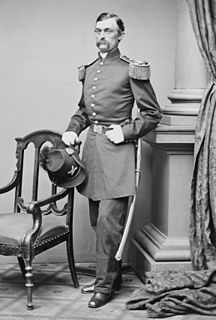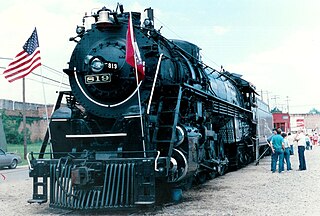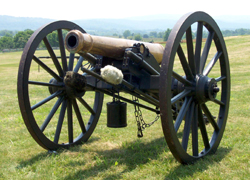
Tyler is a city in the U.S. state of Texas and the largest city and county seat of Smith County. It is also the largest city in Northeast Texas. With a 2019 census-estimated population of 106,991, Tyler was the thirty-eighth most populous city in Texas and 292nd in the United States. It is the principal city of the Greater Tyler metropolitan statistical area, which is the 199th most populous metropolitan area in the U.S. and 16th in Texas after Waco and the College Station–Bryan areas, with a population of 230,221 in 2018.

The Southern Railway was a class 1 railroad based in the Southern United States between 1894 and 1982, when it merged with the Norfolk & Western to form Norfolk Southern. The railroad was the product of nearly 150 predecessor lines that were combined, reorganized and recombined beginning in the 1830s, formally becoming the Southern Railway in 1894.

The St. Louis Southwestern Railway Company, known by its nickname of "The Cotton Belt Route" or simply "Cotton Belt", is a former US Class I railroad which operated between St. Louis, Missouri, and various points in the states of Arkansas, Tennessee, Louisiana, and Texas from 1891 to 1980. In 1980 the Cotton Belt began operating the Rock Island's Golden State Route which added the states of Kansas, Oklahoma, and New Mexico to the operation. It operated as a Southern Pacific subsidiary from 1932 until the operation of the Cotton Belt was assumed by Southern Pacific Transportation Company in 1992.
Bird's Point is an unincorporated community in Mississippi County, Missouri, United States. It lies on an island or former island in the Mississippi River, near the confluence of the Ohio and Mississippi Rivers and is situated directly across from Cairo, Illinois. This is the point where the U.S. Route 60 bridge connects with Cairo.
The Buffalo Bayou, Brazos, and Colorado Railway, also called the Harrisburg Road or Harrisburg Railroad, was the first operating railroad in Texas. It completed its first segment of track between Harrisburg, Texas and Stafford's Point, Texas in 1853. The company established a western terminus at Alleyton, Texas prior to the Civil War. The railroad was sold after the war and reincorporated as the Galveston, Harrisburg, & San Antonio Railroad. This right of way was acquired by the Southern Pacific Railroad and is today a property of the Union Pacific Railroad.

Charles Griffin was a career officer in the United States Army and a Union general in the American Civil War. He rose to command a corps in the Army of the Potomac and fought in many of the key campaigns in the Eastern Theater.
Memphis Union Station was a passenger terminal in Memphis, Tennessee. It served as a hub between railroads of the Southwest, the Missouri Pacific Railroad and the St. Louis Southwestern Railway, and railroads of the Southeast, the Louisville and Nashville Railroad, the Nashville, Chattanooga and St. Louis Railway and the Southern Railway. The terminal, completed in 1912, was built in the Beaux-Arts style and was located on Calhoun Street, between south Second Street and Rayburn Boulevard. It was demolished in 1969. This location in south Memphis was approximately two blocks east of the other major Memphis railroad terminal, Memphis Grand Central Station.

St. Louis Southwestern No. 819 is a class "L1" 4-8-4 "Northern" type steam locomotive and is also the official state locomotive of Arkansas. It was completed in 1943 and was the last engine built by the St. Louis Southwestern Railway, which was affectionately known as "The Cotton Belt Route" or simply "Cotton Belt". It was also the last locomotive built in Arkansas. It was restored to operating condition in 1986 and operated in excursion service until October 1993. Today, it is now located at the Arkansas Railroad Museum, currently being restored back to a static display condition with an intention to restore the locomotive for an eventual second excursion career.

The Tyler metropolitan area, or Greater Tyler area centered on the city of Tyler, Texas, is one of the largest Texan metropolitan areas in East Texas. It had a combined population of 216,080 according to the 2010 U.S. census. The Tyler metropolitan area encompasses all of Smith County.
The El Paso and Southwestern Railroad began in 1888 as the Arizona and South Eastern Railroad, a short line serving copper mines in southern Arizona. Over the next few decades, it grew into a 1200-mile system that stretched from Tucumcari, New Mexico southward to El Paso, Texas, and westward to Tucson, Arizona, with several branch lines, including one to Nacozari, Mexico. The railroad was bought by the Southern Pacific Railroad in 1924 and fully merged into its parent company in 1955. The EP&SW was a major link in the transcontinental route of the Golden State Limited.
The Silver Line, also known as the Cotton Belt Rail Line, is an under construction 26-mile (42 km) commuter rail line traversing Collin, Dallas, and Tarrant Counties in the U.S. state of Texas operated by Dallas Area Rapid Transit. The line will provide service from Dallas's northeast suburbs of Plano, Richardson, and Addison to Dallas/Fort Worth International Airport Terminal B.
The Stephenville North & South Texas Railway (SN&ST) was incorporated in Texas on February 4, 1907 by Stephenville and Hamilton business interests. Its original standard gauge 43 mile line was built between Stephenville and Hamilton and completed in late 1907. The first train operated between Stephenville and Hamilton on Christmas Day 1907. Regular service began in January 1908. Four apparently identical wooden depots of a standard design were built at Hamilton, Carlton, Spurlin, and Alexander. The SN&ST shared a union station with its original primary railroad connection, the long established Fort Worth & Rio Grande Railroad at Stephenville.

The Cotton Belt Freight Depot in St. Louis, Missouri in the Near North Riverfront neighborhood. It was listed on the U.S. National Register of Historic Places in 2004.

The Cotton Belt Depot Museum is a museum located in the historic railroad depot in Tyler, Texas.

The St. Louis Southwestern Railway of Texas, operated the lines of its parent company, the St. Louis Southwestern Railway within the state of Texas. The St. Louis Southwestern, known by its nickname of "The Cotton Belt Route" or simply the Cotton Belt, was organized on January 12, 1891, although it had its origins in a series of short rail lines founded in 1870 in Tyler, Texas, that connected northeastern Texas to Arkansas and southeastern Missouri. Construction of the original Tyler Tap Railroad began in the summer of 1875. The St. Louis Southwestern of Texas merged with the property of the Tyler Southeastern Railway on October 6, 1899. The property of the Texas and Louisiana Railway was acquired and merged on July 2, 1903.
Texas Midland Railroad (TM) was incorporated in Texas on December 1, 1892 by Hetty Green. The original standard gauge 52 mile line was built between Garrett and Midland Junction by the Houston and Texas Central Railroad in 1882. This original line was known as the Northeast Extension of the Houston and Texas Central. The line went bankrupt in 1885 and the Northeast Extension was sold at foreclosure on April 22, 1891 and became the Texas Central. This portion of the Texas Central was sold on October 27, 1892 to Hetty Green. Hetty Green sold the 52 mile railroad to the Texas Midland on January 27, 1893 and installed her son Edward Howland Robinson Green as President and General Manager. Headquarters city of the Texas Midland was Terrell, Texas. At start up the new company had five steam locomotives a 2-4-4, three 4-4-0s and a 4-6-0. Initial capitalization of the Texas Midland was $500,000. Over the next two decades Hetty Green invested some $1.8 million in the Texas Midland.

The St. Louis Southwestern Railway Steam Locomotive #336 is a historic railroad steam locomotive, located at the Arkansas Railroad Museum in Pine Bluff, Arkansas. It is a Class D3 2-6-0 Mogul-style locomotive, built in 1909 by the Baldwin Locomotive Works in Philadelphia, Pennsylvania. She served on the St. Louis Southwestern Railway until 1947, and served industrial customers until 1963. It was placed on display in Lewisville, Arkansas until 1994, when it was donated to the museum. It is the last remaining 330-series locomotive used by the Cotton Belt.

Douglas's Texas Battery was an artillery battery that served in the Confederate States Army during the American Civil War. In June 1861, the unit was formed by combining one group of men from Dallas with a second group from Tyler and placing them under the command of John Jay Good. The battery fought at Pea Ridge in March 1862 and soon afterward transferred to the east side of the Mississippi River. James Postell Douglas replaced Good as commander and led the battery at Richmond, Stones River, Chickamauga, Chattanooga, the Atlanta Campaign, Franklin, and Nashville. After operations around Mobile, Alabama, Confederate units in the region surrendered and the survivors of the battery were paroled on 12 May 1865. It was the only Texas field artillery unit that served east of the Mississippi.
William Edgar Hughes was an American politician from Texas.










